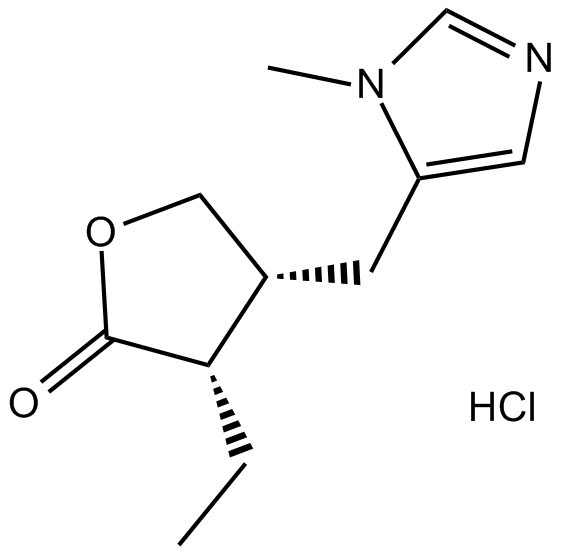Pilocarpine HCl
Pilocarpine HCl (CAS 54-71-7), the hydrochloride salt form of pilocarpine, is a nonselective muscarinic acetylcholine receptor agonist derived from plants of the Pilocarpus genus. By directly activating muscarinic receptors, pilocarpine promotes exocrine gland secretion, induces contraction of smooth muscle tissues, and when applied ocularly, triggers miosis and ciliary muscle contraction, enhancing aqueous humor drainage and reducing intraocular pressure. In biomedical research, pilocarpine is employed widely to induce rodent epilepsy models and to study cholinergic mechanisms underlying secretory processes.
| Physical Appearance | A solid |
| Storage | Store at -20°C |
| M.Wt | 244.72 |
| Cas No. | 54-71-7 |
| Formula | C11H16N2O2·HCl |
| Solubility | ≥101 mg/mL in H2O; ≥18.57 mg/mL in EtOH; ≥8.35 mg/mL in DMSO |
| Chemical Name | (3S,4R)-3-ethyl-4-((1-methyl-1H-imidazol-5-yl)methyl)dihydrofuran-2(3H)-one hydrochloride |
| SDF | Download SDF |
| Canonical SMILES | CC[C@@H]([C@@H](Cc1cnc[n]1C)CO1)C1=O.Cl |
| Shipping Condition | Small Molecules with Blue Ice, Modified Nucleotides with Dry Ice. |
| General tips | We do not recommend long-term storage for the solution, please use it up soon. |
Quality Control & MSDS
- View current batch:
Chemical structure









